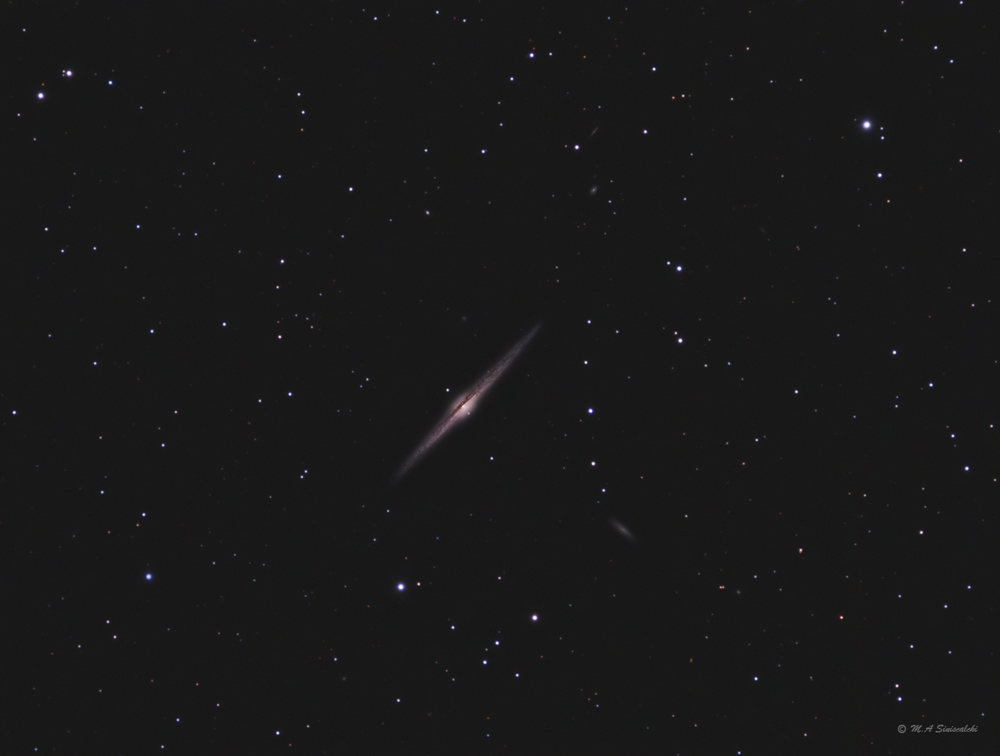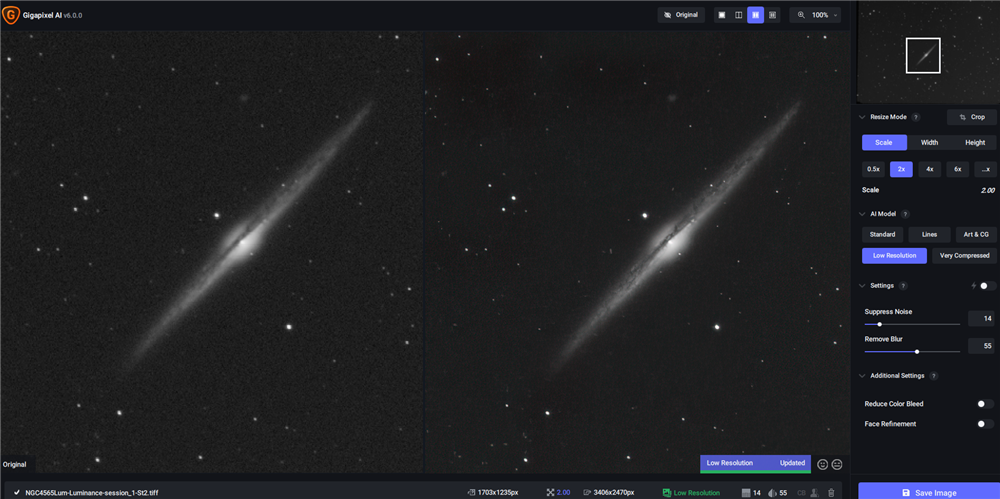© 2022 Michael A. Siniscalchi
NGC 4565
Spiral Galaxy in Coma Berenices
RA:12h 36m 50s Dec: +25° 53' 14" Distance - ~47 mly Size- 15.9' x 1.85
Click on image for larger size
From Wikipedia;
NGC 4565 (also known as the Needle Galaxy or Caldwell 38) is an edge-on spiral galaxy about 30 to 50 million light-years away in the constellation Coma Berenices. It lies close to the North Galactic Pole and has a visual magnitude of approximately 10. It is known as the Needle Galaxy for its narrow profile. First recorded in 1785 by William Herschel, it is a prominent example of an edge-on spiral galaxy.
NGC 4565 is a giant spiral galaxy more luminous than the Andromeda Galaxy. Much speculation exists in literature as to the nature of the central bulge. In the absence of clear-cut dynamical data on the motions of stars in the bulge, the photometric data alone cannot adjudge among various options put forth. However, its exponential shape suggested that it is a barred spiral galaxy. Studies with the help of the Spitzer Space Telescope not only confirmed the presence of a central bar but also showed a pseudobulge within it as well as an inner ring.
NGC 4565 has at least two satellite galaxies, one of which is interacting with it. It has a population of roughly 240 globular clusters, more than the Milky Way. NGC 4565 is one of the brightest member galaxies of the Coma I Group.
This edge-on galaxy exhibits a slightly warped and extended disk under deep optical surveys- likely due to ongoing interactions with neighboring satellite galaxies or other galaxies in the Coma I group.
A side by side comparison comparing the native galaxy resized to 2x and the detailed Topaz Gigapixel AI version.
- Sometimes there are artifacts in the surrounding stars so only the galaxy structure was used.
- My usual technique is to remove the stars and work on the galaxy structure and smooth the background in Luminance only and add the stars back later.
- The RGB color is processed separately and with a 0.8px gaussian blur applied, added to the Lum channel using color blending in PS.
The Gigapixel 2x version was resized down to its native size using Photoshop Preserve Details 2.0.

